Affiliate links on Android Authority may earn us a commission. Learn more.
Samsung Galaxy S6 vs iPhone 6s
Published onOctober 7, 2015

The two biggest giants in the smartphone game go head to head in this comparison, and while it was another “S” year for the Apple device, it did add some interesting features, such as a new form of input, rather than just the general upgrade in specifications. How does the latest from Apple fare against one of the best Android devices currently available? We find out, in this comprehensive look at the Samsung Galaxy S6 vs iPhone 6s!
Note: While the majority of this comparison will involve the regular versions of the Samsung Galaxy S6 and iPhone 6s, other versions, namely the Samsung Galaxy S6 Edge, Galaxy S6 Edge+, and the iPhone 6s Plus will be briefly considered in certain aspects.
Design
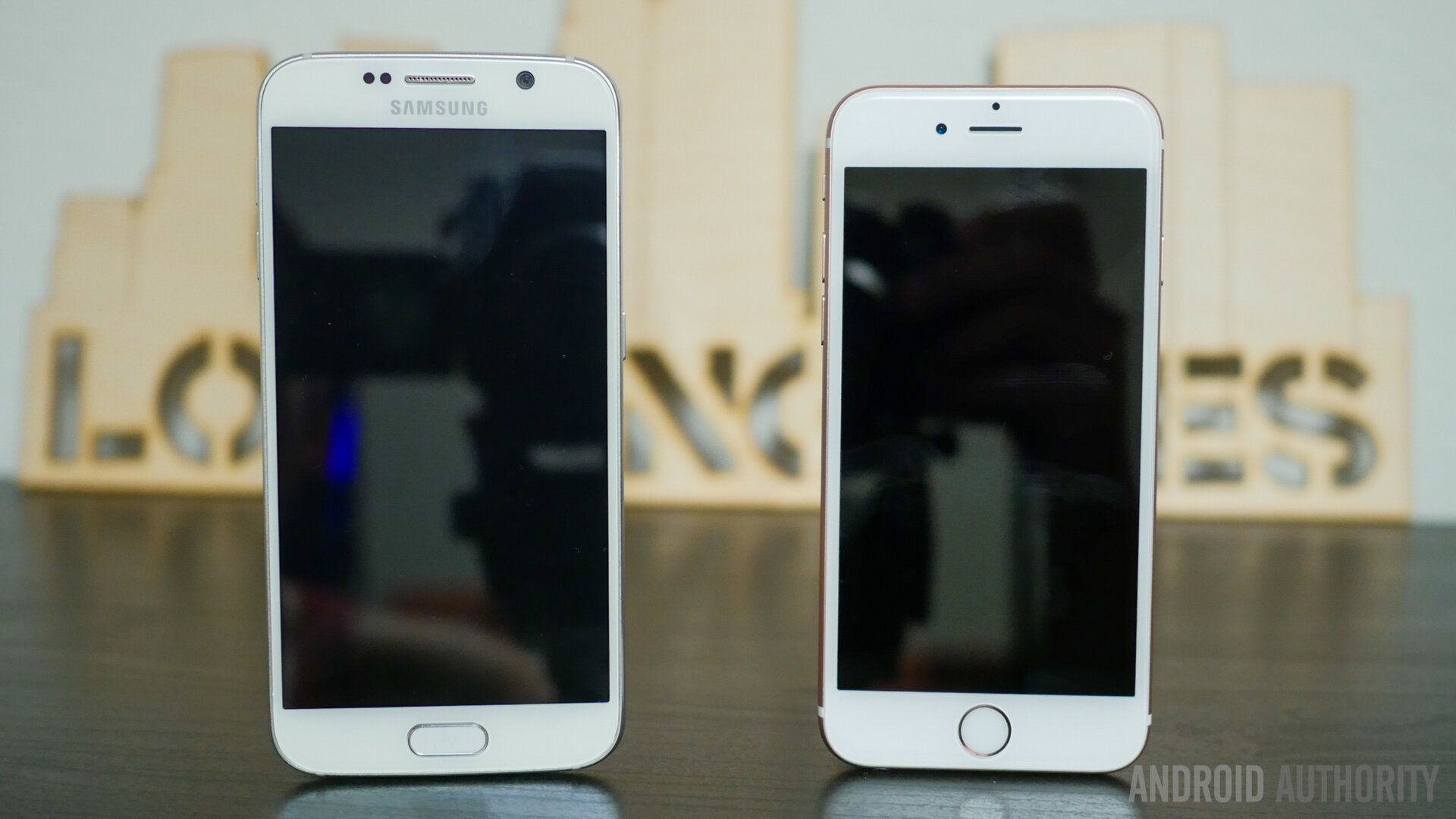
The design aspect is more of a big deal when it comes to the Samsung devices, with Apple remaining true to the metal construction and design language that has been retained from its predecessor. On the other hand, while the Galaxy S6 does still offer the overall feel of a Samsung smartphone, there have been some drastic shifts in the design language and build quality when compared to the Galaxy S5 last year.
With their latest flagships, Samsung has adopted a unibody design that does away with the back cover, which also unfortunately means a move away from user-replaceable batteries and expandable storage. Dual glass panels are held together with a metal chassis, and the addition of these elements alone signaled a positive change for many users.
That said, much of what we all remember from past Galaxy S series devices returns here, especially with regards to the button layout. The physical home button up front is flanked by the capacitive Back and Recent Apps keys, and the power button and volume rocker are once again found on the right and left sides respectively.
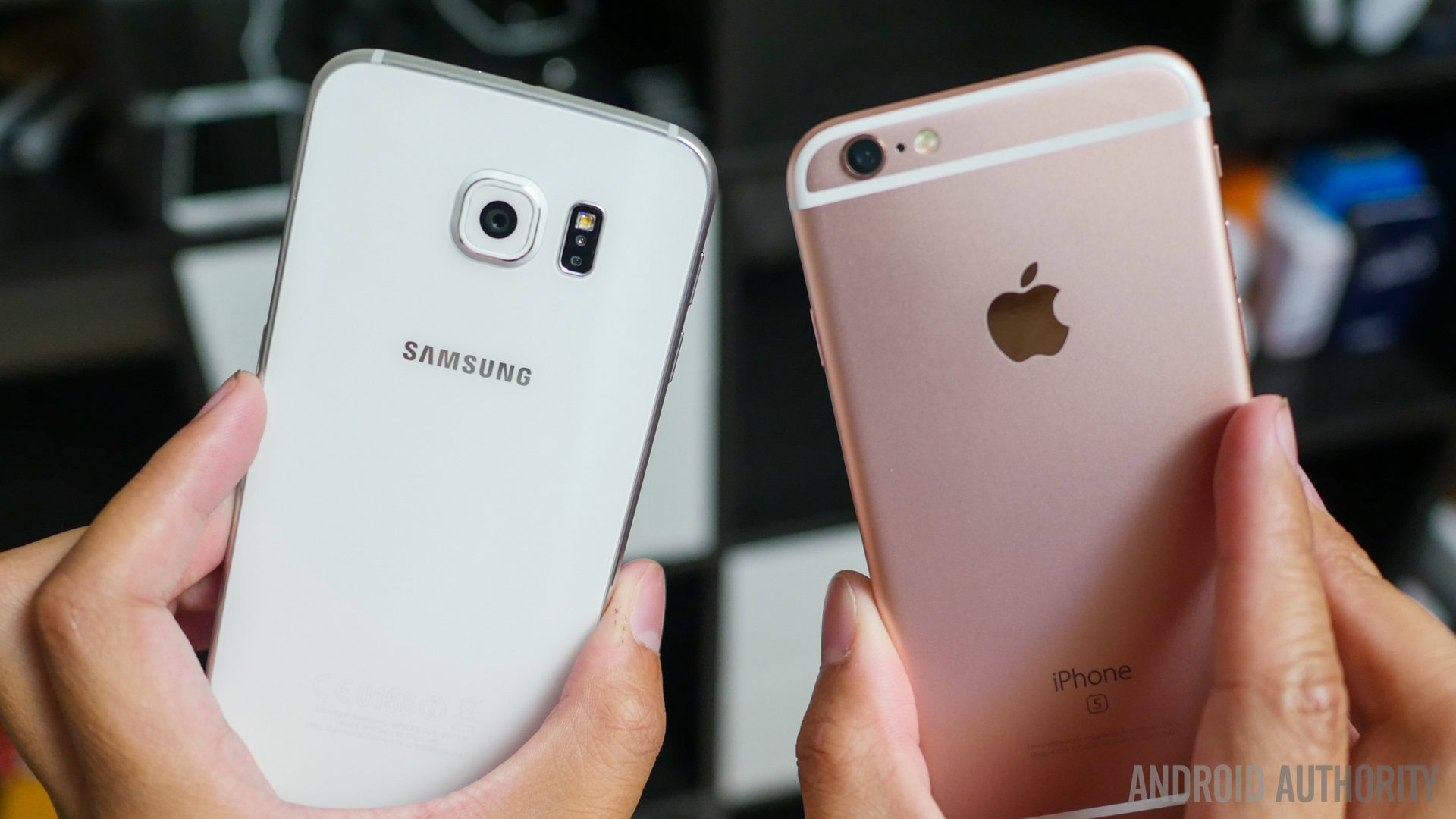
A 5.1-inch display helps with the handling as much as the slim profile, making the Galaxy S6 one of the more accessible devices available on the market today. The handling experience is even better with the Galaxy S6 Edge, however, whose screen curves downwards to meet the hand. Of course, the handling won’t be as comfortable for those who are looking for a big screen, as is available with the Galaxy S6 Edge+ and iPhone 6S Plus, but that is a compromise you are likely already willing to make in favor of a bigger display.
The Samsung flagship comes in a number of different colors, ranging from white, to a very dark blue, as well as a gold version, though you have to keep in mind that the translucent glass on the back might make the color look a little different that what you might expect.
On the other hand is the iPhone 6s, which, like all the other Apple “s” iterations, adds the suffix to a phone that feels completely familiar. Size is the obvious difference here between the S6, with the more modest screen size of making this one of the smaller devices we’ve seen in a while, especially when compared to any of its flagship competition in the Android world (save for the Z5 Compact).

As is the case with the Samsung flagship, the buttons are all in the same place as before, with the power button also on the opposite side of the volume rocker and the silence toggle, with the lone tactile home button up front. The iPhone is a little thinner, but unibody designs have always been their forte, meaning removable batteries and microSD card slots have never a part of an Apple fans’ vocabulary.
The metal wrapping around the device does feel nice, but the thin profile and overall smaller footprint gets most of the credit as far as the good handling experience is concerned. The iPhone 6s is also available in a few color variants, including a new rose gold version, which is what is seen in this comparison.
Design is normally an easy, personal part of these comparisons, but this year has been a great one for Android smartphones, with the Galaxy S6 being one of the most talked about devices in terms of their design changes. Metal is obviously the way to go for both Apple and Samsung, and it does really come down to which one better speaks to you. If handling is really important though, we can’t deny the smaller and highly accessible size of the iPhone. Plenty of people have had great things to say about how either device looks, but the choice always becomes a little harder when you begin to consider what is found underneath the surface.
Display
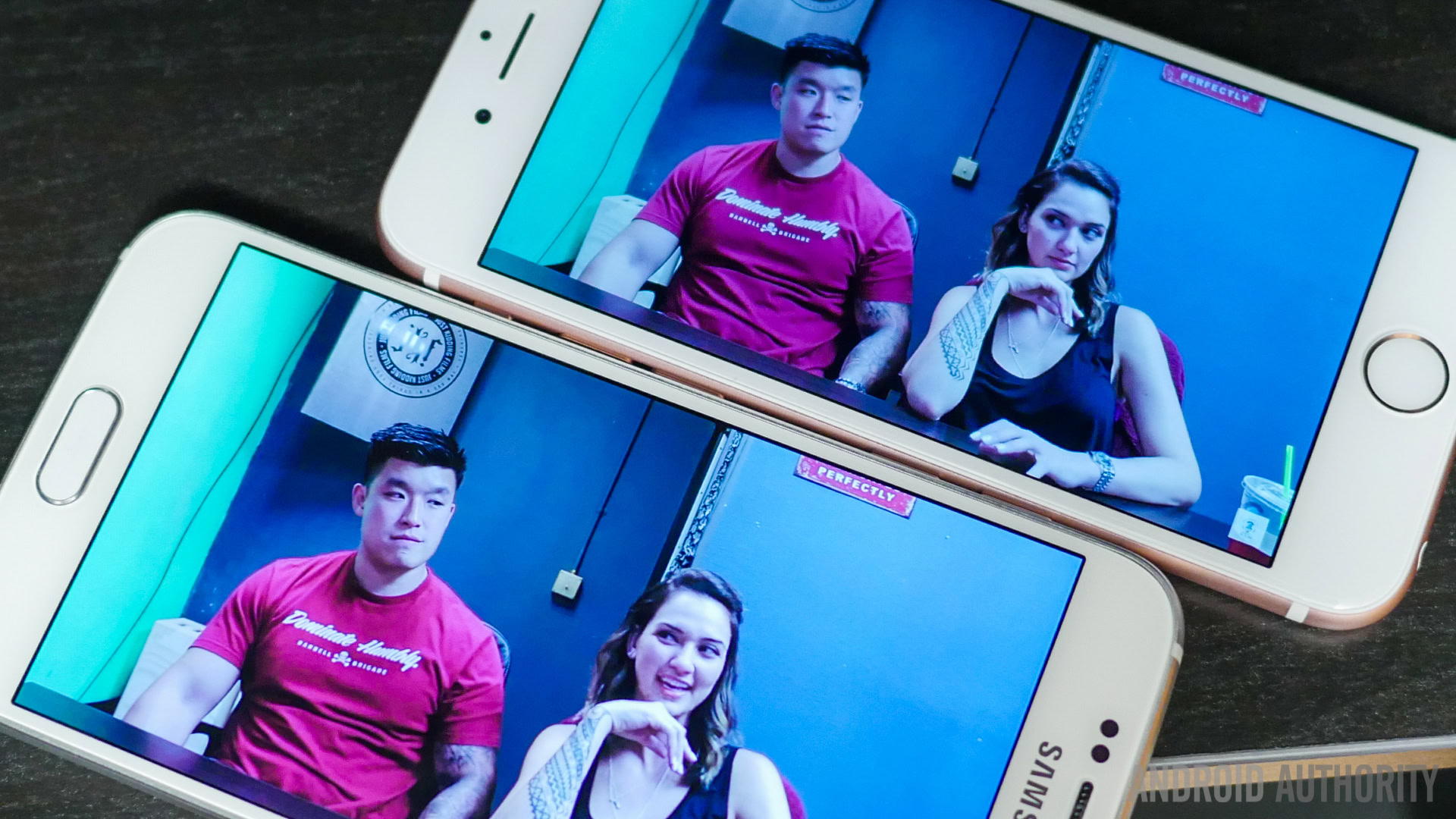
The spec hungry will start to pick sides starting with the display, as the displays of these devices could not be any more different. The Samsung Galaxy S6 is all about the numbers, with its 5.1-inch display boasting a Quad HD resolution, and a resulting pixel density of a whopping 577 ppi. Couple that with the usual tropes of Super AMOLED technology, including high saturation and its potential power saving features, and you have Samsung’s most forward display offering.
Meanwhile, the iPhone 6s seems quite paltry on paper, with the 4.7-inch IPS LCD display coming with a 1334 x 750 resolution, resulting in a pixel density of 326 ppi. Apple has been adamant for years that higher pixel densities don’t lead to better display experiences, and the iPhone 6s does prove to be a good daily display despite the smaller specifications overall.
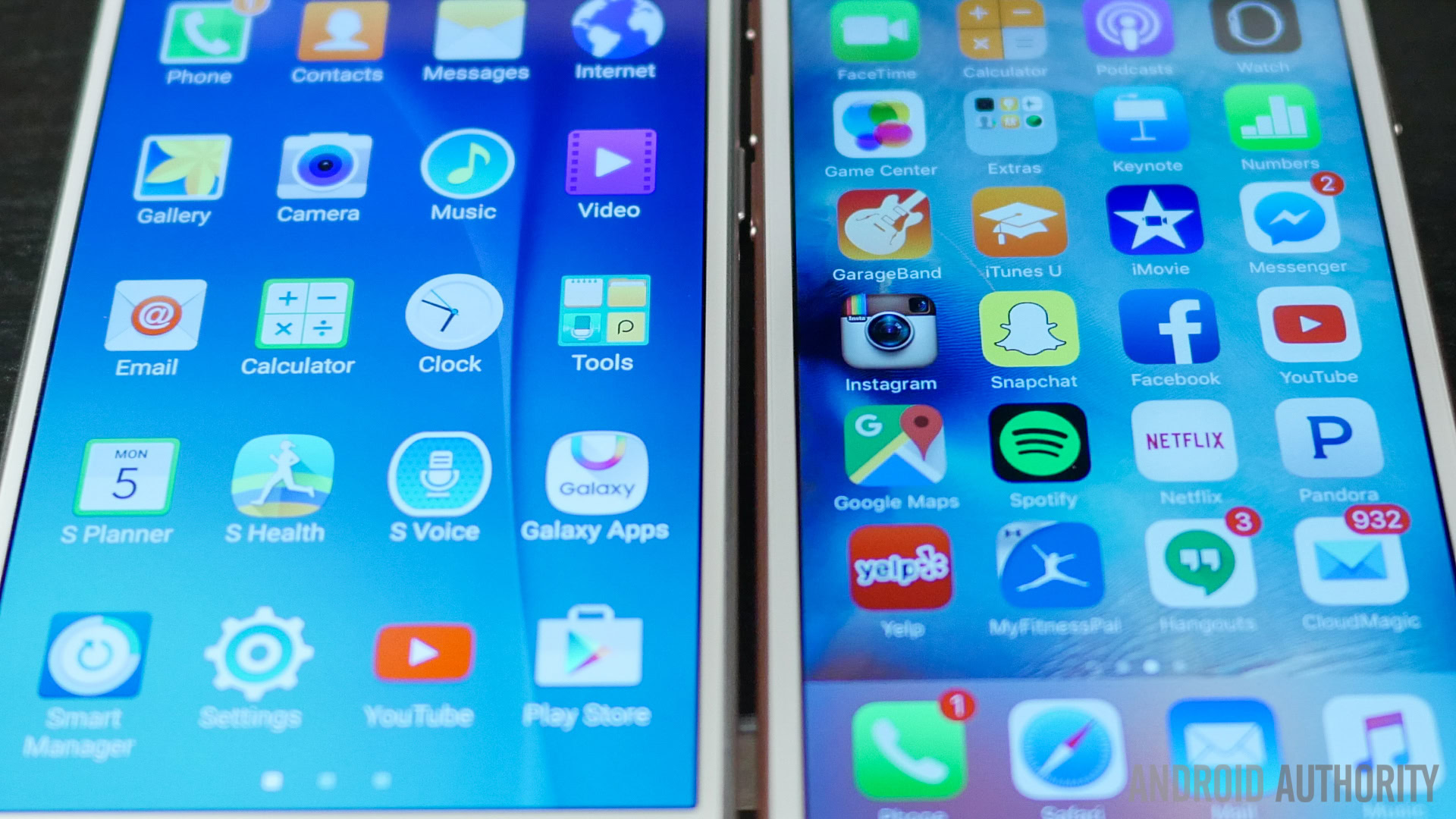
There is also the newest, and perhaps biggest addition to the iPhone display, called 3D Touch, with their being sensors right underneath the display that meter how much force is being brought down with your finger. Android has been capable of similar functionality in its own way in various screen technologies, but Apple is trying to fully leverage it for a new input method.
You have to press down pretty hard to get it to work, but the other main aspect of 3D Touch is that in order to trigger certain tasks, like moving the icons around, a lighter, or more normal touch, held down for a noticeable amount of time is required. Otherwise, a press down really hard will trigger 3D Touch. On icons on the homescreen, it will bring up quick shortcuts to functions within the application, which is quite useful, but otherwise, 3D Touch is mostly used to trigger the Live feature in the gallery, if you have it on. Despite Apple’s success in showing how useful 3D Touch can be, it is a very new feature, and we are yet to see a lot of applications for it.
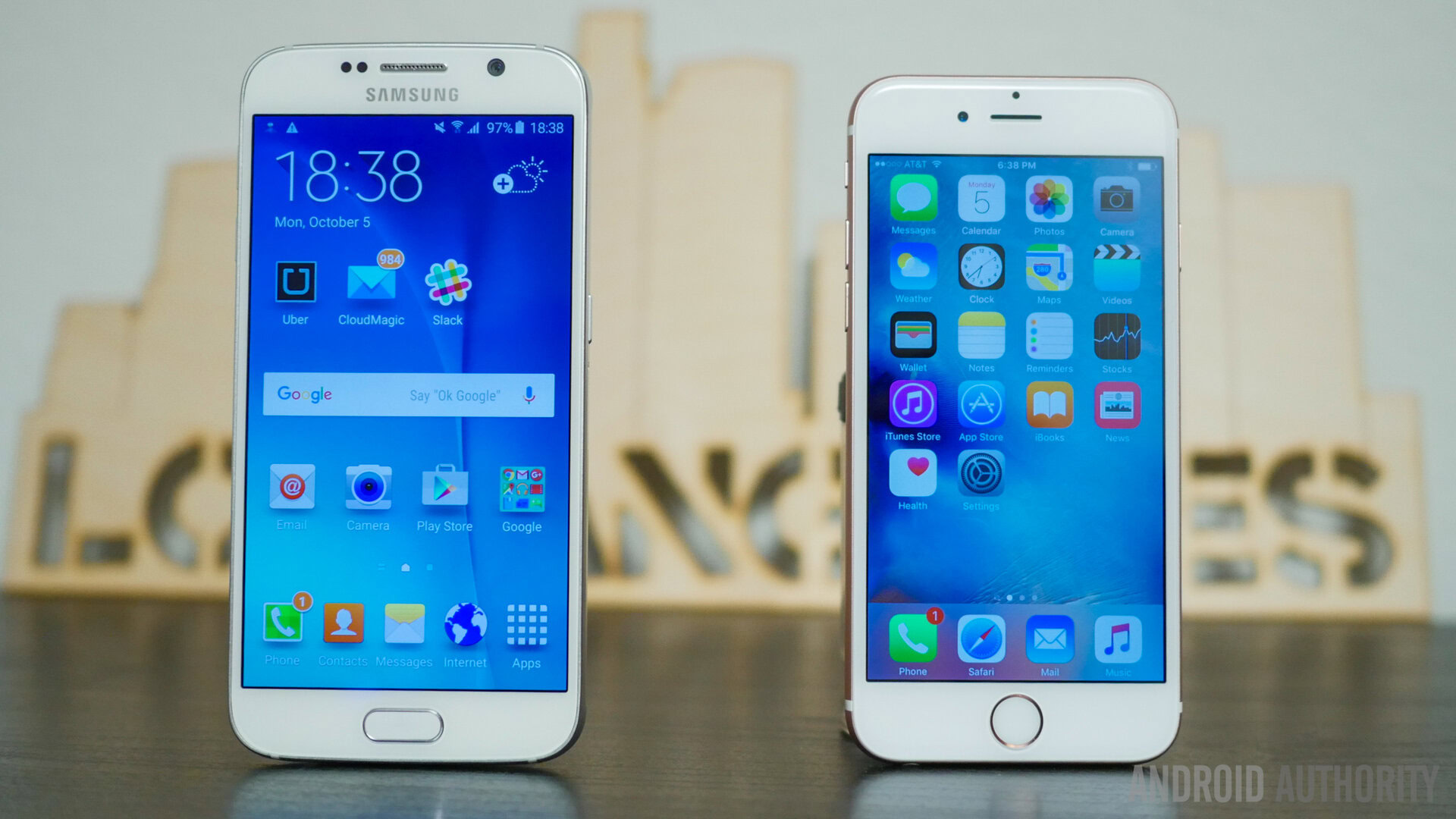
As far as the straight display experience is concerned, Quad HD is certainly great, and if you are a fan of high-res displays, then any 2015 Galaxy smartphone will be your pick. Moving around the respective user interfaces, there is an undeniable sharpness in the Quad HD display over the iPhone screen, which has an obvious smoothening when scrolling and moving among elements. That said, while actual differences between these displays can be observed, the disparity probably won’t be big enough for most users.
Text is still very readable on the iPhone, despite the Galaxy S6 simply trouncing it in pretty much every aspect related to viewing. However, colors aren’t so different on the iPhone, so games and media are still quite enjoyable, unless display size matters a lot to you. We have been pleasantly surprised to see 3D Touch actually work kind of well, but the splash it is making now, though significant, is small.
Performance
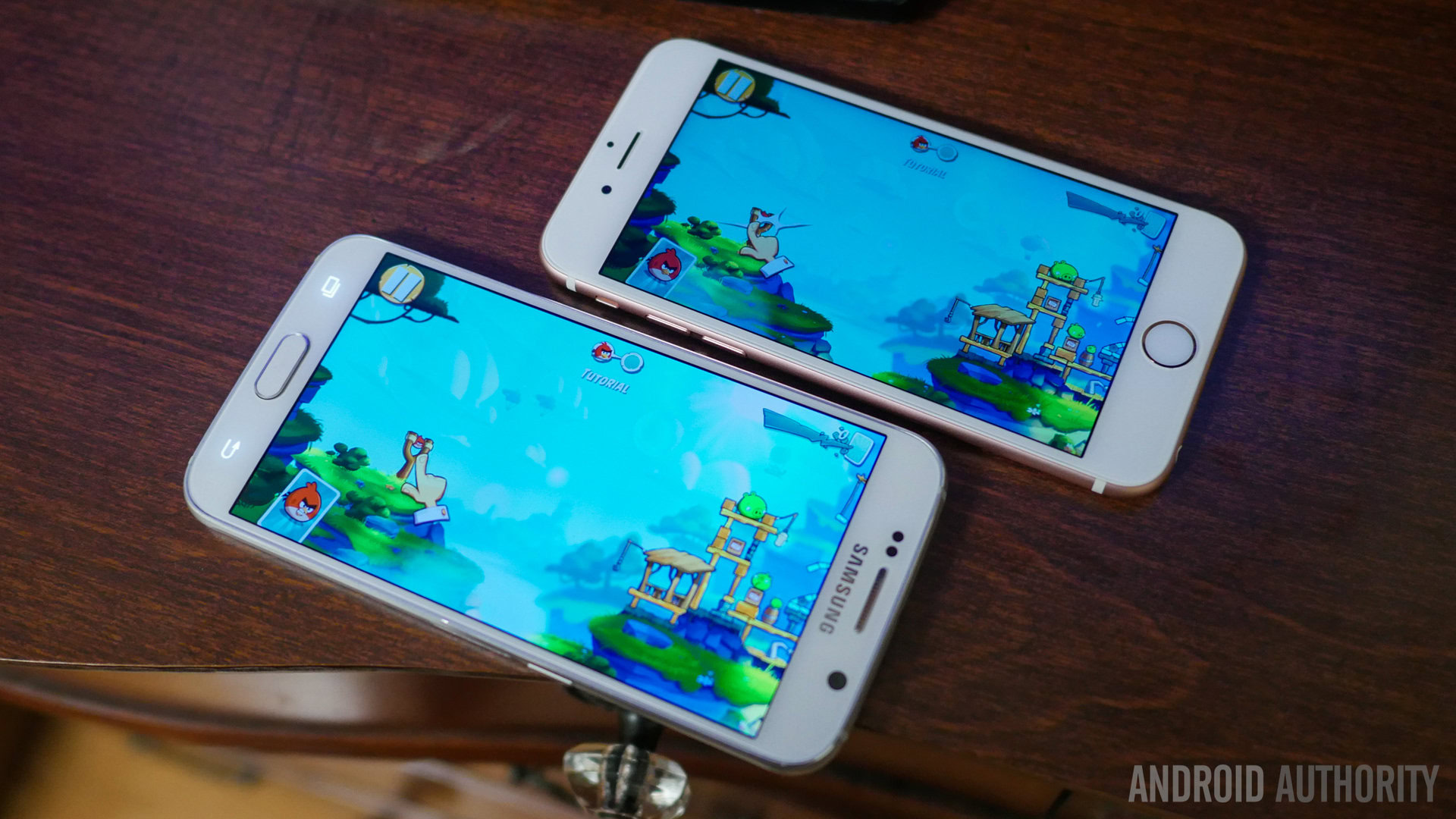
Performance is another section where the spec hungry will have a field day, but the vitriol might not be completely justified, because of the fact that we’re talking about two completely different operating systems here, with very different requirements to keep them running.
Under the hood, the Samsung Galaxy S6 features the in-house octa-core Exynos 7420 processor, backed by 3 GB of RAM to take care of all the multi-tasking that this phone can easily perform. Android needs to be a lot of wiggle room for performance, and it can be argued that aspects like RAM management, and even the way applications are built, can cause a slowdown. That is why Android smartphones require higher specifications as time marches on, and Samsung has been able to meet the demand. This processing package is not lacking in power at all, and multi-tasking is robust and usable, apart from whenever any issues on the software side creep up. Gaming is also a joy, further enhanced by the high resolution display.
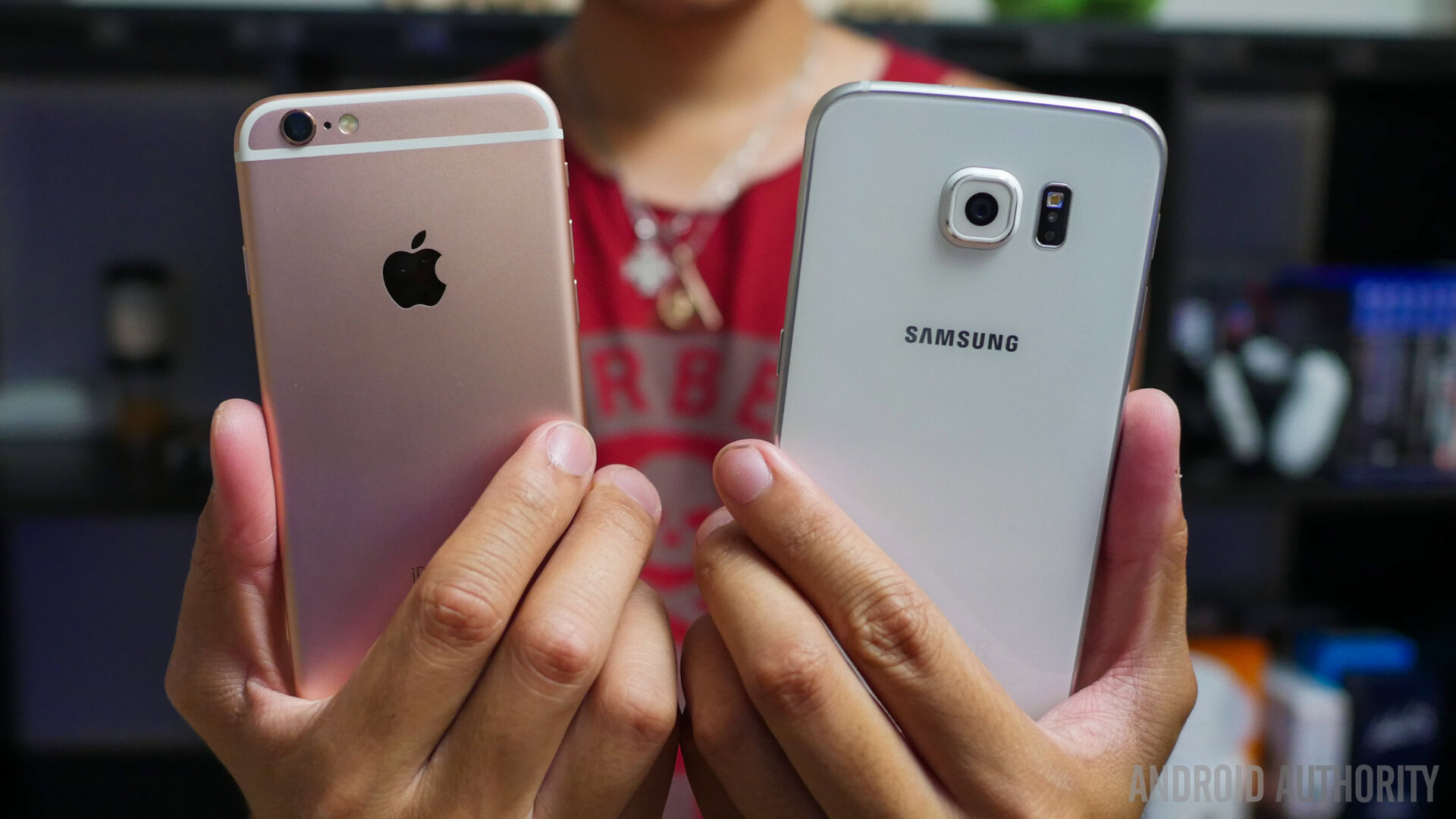
Apple has steadily raised the bar with their iPhones as well, though the spec sheet might still seem underwhelming when compared to the Galaxy S6. Under the hood is an updated dual-core Apple A9 processor, with 2 GB of RAM to back it up, but before users immediately disregard the iPhone as a good performer, it is important to consider the fact that the iPhone has served as a launchpad for plenty of games and high-functioning applications.
Since Apple only releases a select number of devices, it is much easier for them to provide exceptional software optimization, which in turn means that they require less aggressive specs than their Android rivals. While there are some complaints of stutter and slowdown with iOS and the iPhone family from time to time, the same can be said for TouchWiz, which means that cut and dry specifications are only a part of the story.
It would be different if the app disparity was larger, but it is possible to get virtually the same functionality from either of these devices, regardless of the skin or operating system you choose. Given that either smartphone proves to be as reliable and useful as the other, the performance aspect becomes more equal, or at the very least, more relative.
Hardware
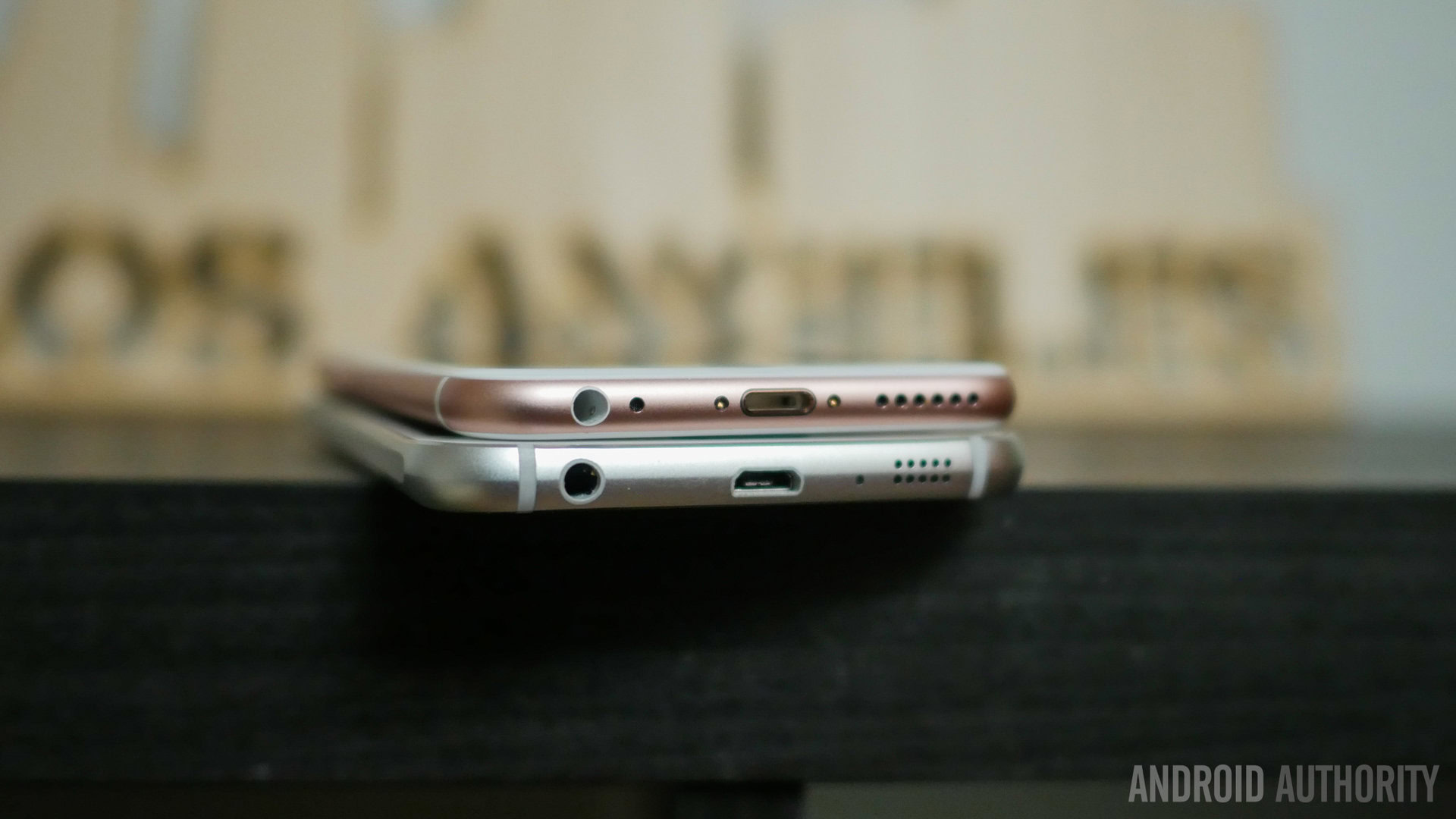
As far as hardware is concerned, this year might be the closest that these phones have ever been. Starting with the Galaxy S6, though plenty of people have commented on how similar the bottom of the Samsung device looks to the iPhone, its unibody design still keeps a number of key features, including the heart rate sensor on the back, that works pretty well with the updated S Health, as well as the fingerprint reader that is embedded into the tactile home button.
With it being on the home button, the fingerprint sensor works quite well, with you required to just leave the finger on the button after pressing it to wake the phone. The Galaxy S6 also packs every connectivity option, including NFC, which can be used with the recently-launched Samsung Pay and Android Pay. Fast charging helps the battery get back to a hundred percent really easily, and the device is also compatible with all forms of wireless charging out of the box.
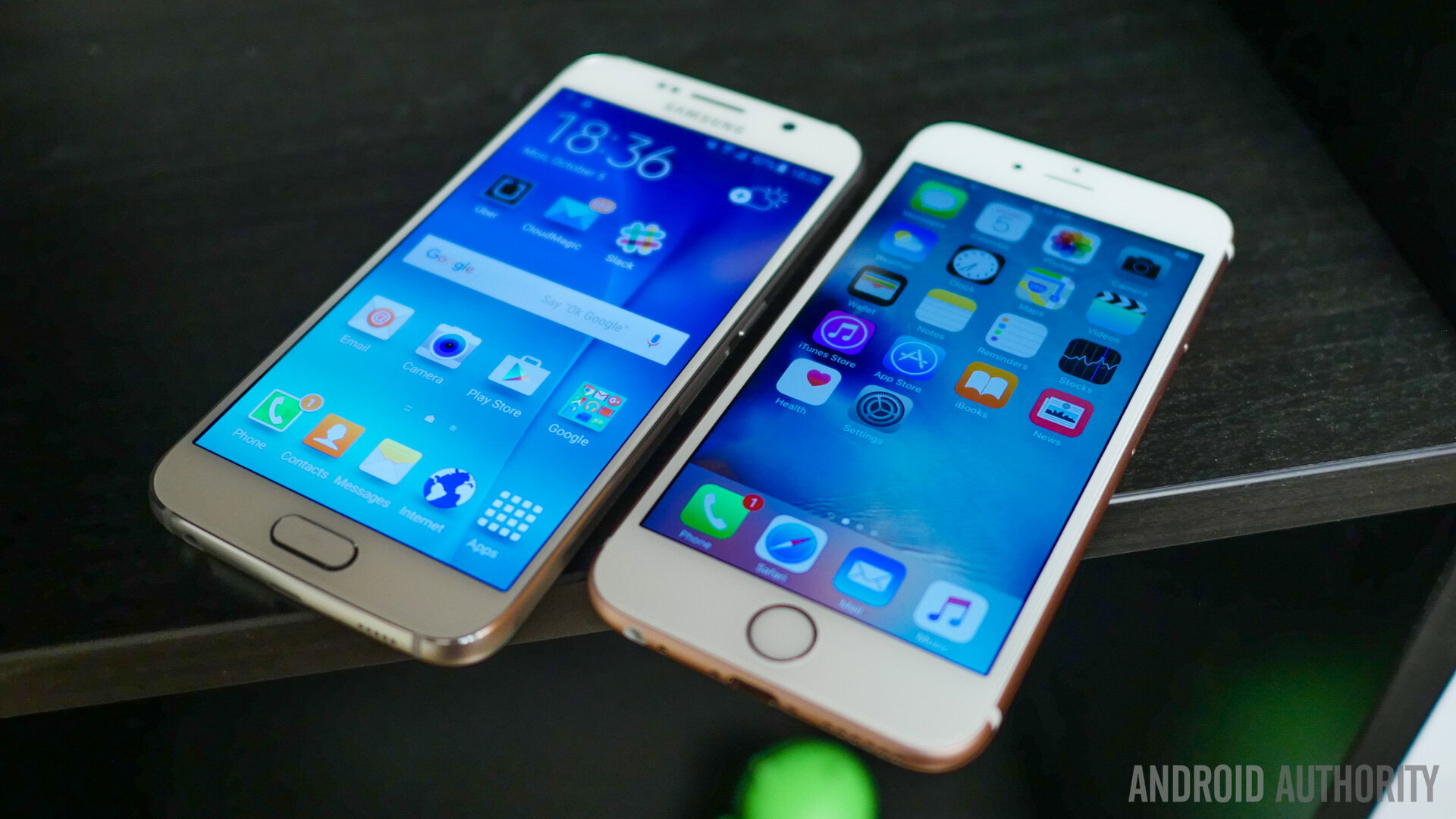
The iPhone 6s doesn’t offer a lot of extras when it comes to hardware, with no heart rate monitor, and neither fast charging or wireless charging capabilities to be found. Instead, the tropes of the iPhone are ultimately familiar, like the silence toggle that has been around since the beginning, and the fingerprint reader in the home button, that also works very well. Apple claims that the fingerprint reading only requires a slight press now, and it does feel that little bit faster, though in the grand scheme of things, the convenience is about the same.
NFC finally made it into the Apple ecosystem with the iPhone 6, but was used exclusively for Apple Pay. We have yet to put some real world testing to compare the various mobile pay systems from Samsung, Android, and Apple, but thus far, we find that you can use all of these services in most of the same places, with Apple Pay’s foothold proving a little larger than Google’s. Finally, in battery, a 1,715 mAh unit has the benefit of a lower resolution display and a new power saving mode in iOS 9, but like the Samsung Galaxy S6, only around a full day of usage is expected, and anything more happens pretty rarely and only with lower levels of usage.
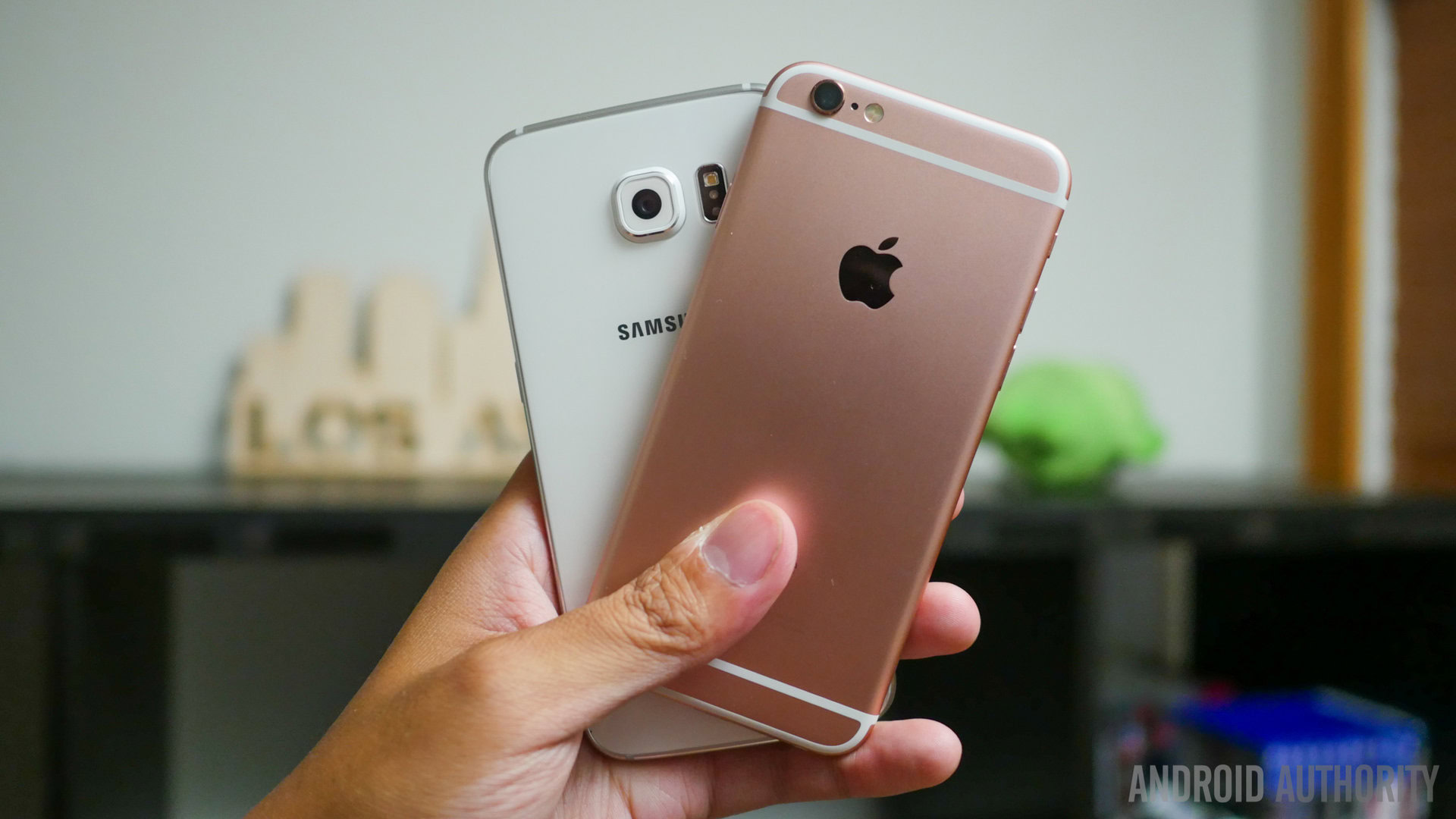
For users that want to accessorize, Samsung is still a little behind in third-party support, despite it improving greatly since the Galaxy S4. Any users that still have their cases or accessories from the iPhone 6 can use them again with the iPhone 6s, and the third-party support for the iPhone is incredibly widespread. As far as the hardware extras are concerned, many people swear by fast charging, and with the iPhone having a small battery that can lose power before getting home, without fast charging, the iPhone requires a tether to a wall or an external battery most of the time.
Camera
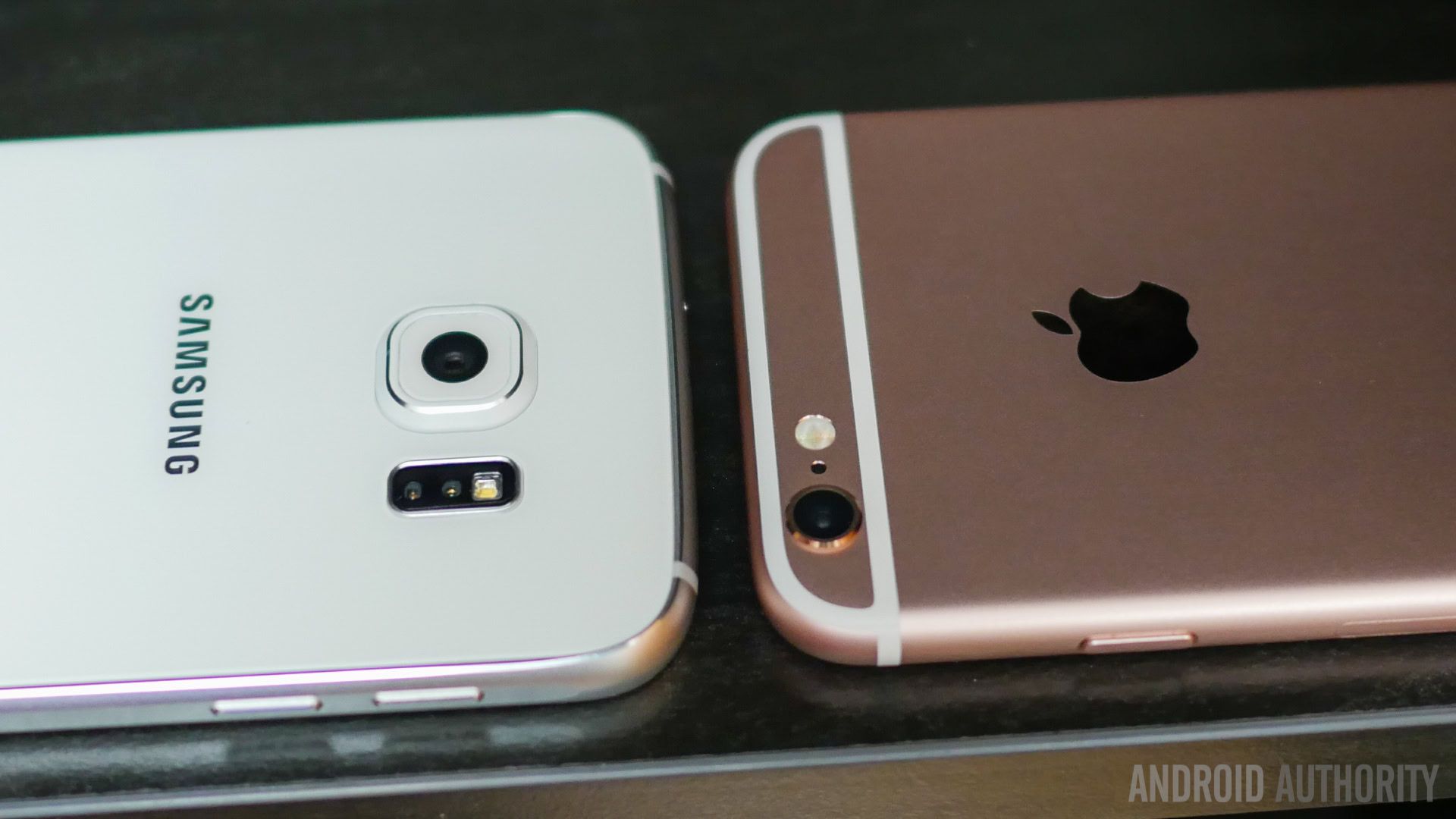
When it comes to the camera, the main story here is Apple’s enhancement to the camera package with the iPhone 6s, with the device now featuring a 12 MP rear camera and 5 MP front-facing unit, compared to the 16 MP primary camera of the Samsung Galaxy S6, with also a 5 MP front-facing camera.
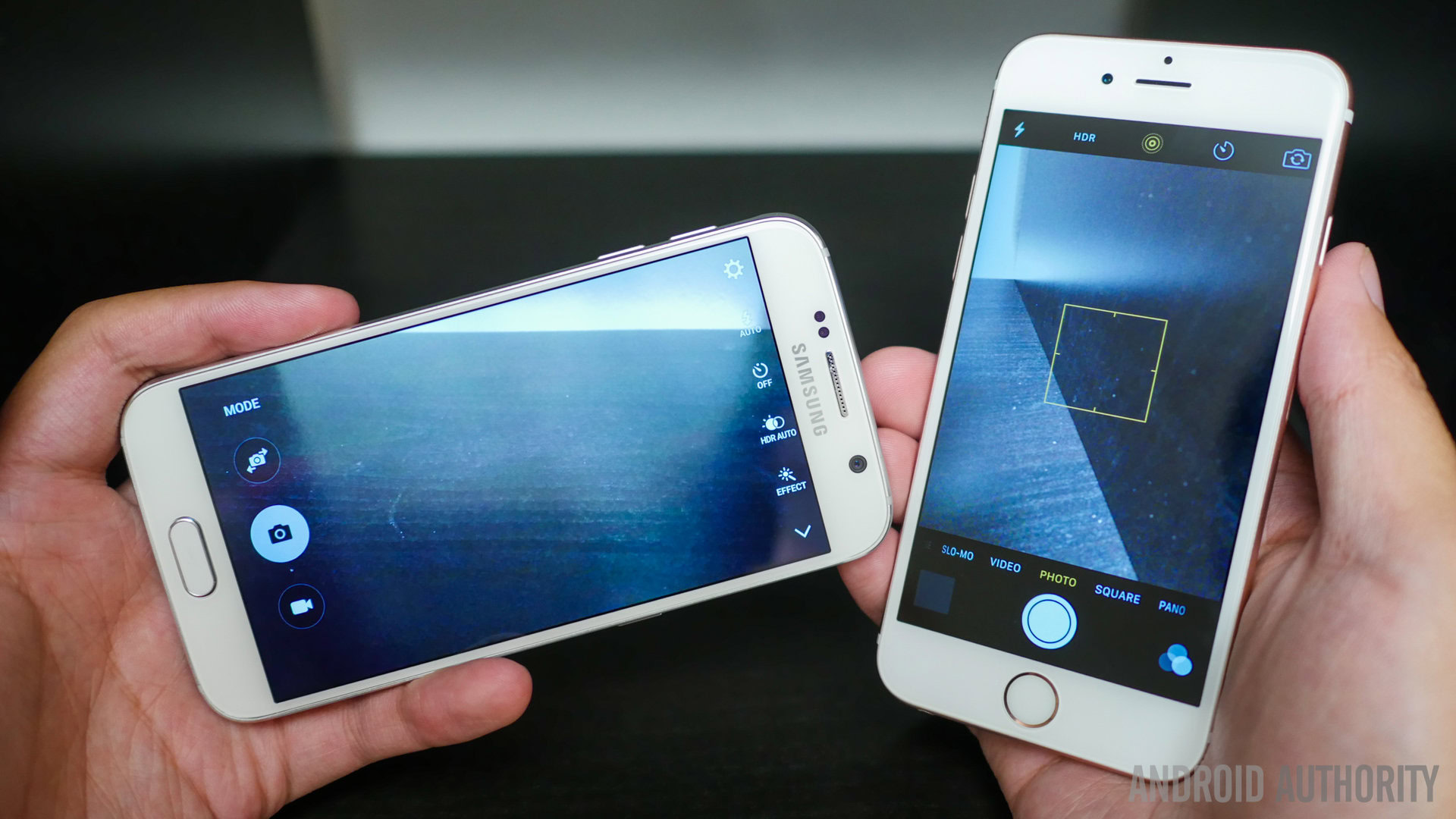
Looking through the images in the video above and the galleries here, it is up to you as to which one you feel is the better performer. We actually found the images from both cameras, regardless of what we were shooting, to be very pleasing. One phone didn’t really win that much more over the other, if at all, and it will depend on which color profiles you prefer. The iPhone does tend to add a warmer tone to everything and also adds more contrast. On the flip side, the Galaxy S6 puts a cooler tone to everything, and its pictures are a little more evened out in their range.
Samsung Galaxy S6 camera samples
The iPhone can now also boast about 4K video recording, but there is no optical image stabilization available with the smaller version. One useful feature the device adds is the ability to use the display as a flash when taking a selfie, but using this does tend to wash out the subject too much.
iPhone 6s camera samples
The camera of the Samsung Galaxy S6 provides a lot of manual control, which is probably what gives this camera the upper hand for us. If you require just a great point and shoot experience however, it is probably not going to get any better than the iPhone 6s. The Auto mode of the Galaxy S6 is pretty good, but Apple has certainly been pioneering that aspect for a long time now.
Software
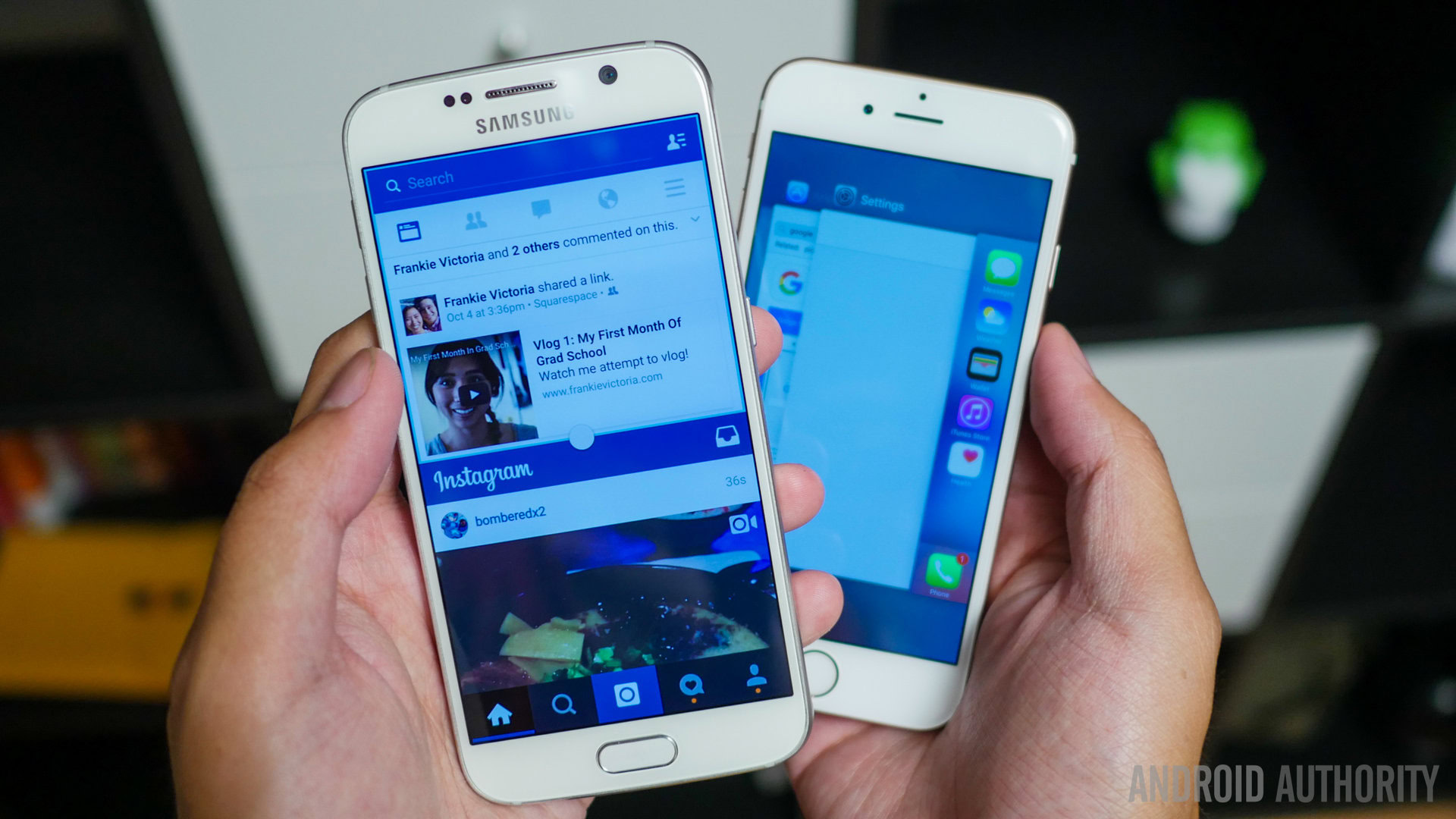
On the software side of things, making a comparison is quite difficult, considering the fact that these devices feature two completely different ecosystems. With the gap between both iOS and Android – in terms of what apps are available – being incredibly small, it really comes down to how you want your daily usage to fundamentally look.
Samsung’s TouchWiz has gone through a bit of a renaissance of late, with the software actually stripping down not only the incessant tutorials that plagued daily usage, but even some features that had previously proved to be quite useless. The bubbly nature of TouchWiz’s icons and general aesthetic remain, but some Material Design elements of Android Lollipop do make their way over as well.
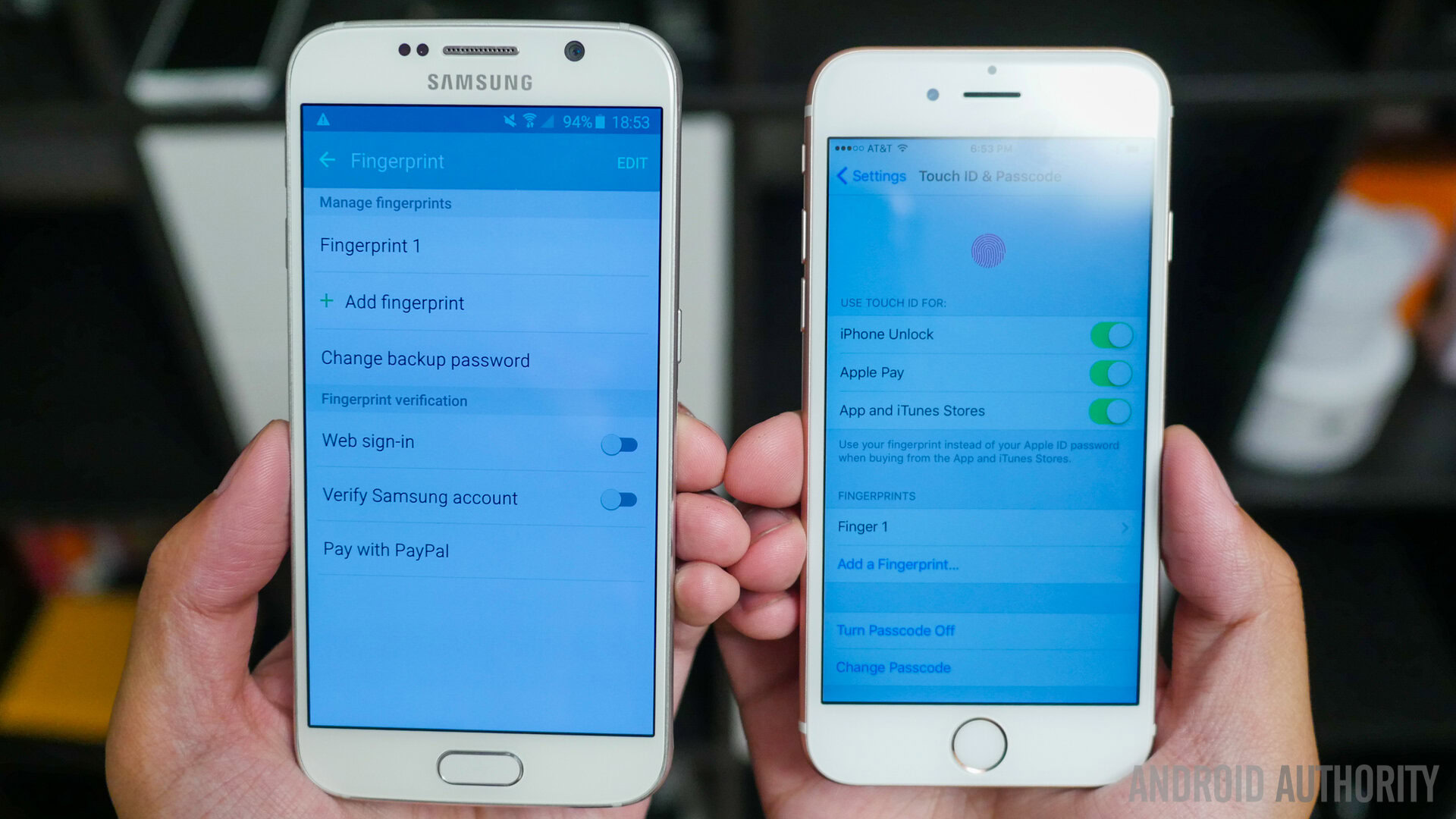
Otherwise, the experience is nothing more than the general usage of Android, with homescreens that can hold widgets, an app drawer, notification dropdown with Quick Settings, and multi-tasking capabilities. There are certain features that have returned, like S-Window, that shrinks a number of applications, and Multi-Window, which is basically a split-screen capability. While Multi-Window can be useful, most users still focus on switching between apps using the Recent Apps screen instead. S Voice is still available, and you can also use Google Voice Search.
For years, Android has been given the benefit of customization and full user control, and that continues to hold true today. You can install launchers if you don’t like TouchWiz, widgets give users an easy way of making shortcuts and providing information at a glance, and just about any part of the phone can be changed for a different experience.
Apple’s new version of iOS does have a pretty elegant version of split screen multi-tasking as well, but that is available only with the larger Plus model. What we have given Apple credit for in the past is how fluid and smooth iOS tends to look and feel, but that is the benefit that Apple has with having only one or two flagship devices to work with. Android has so many players in the game that an ubiquitous aesthetic is much harder to achieve, though Lollipop and Material Design has done a good job of bringing in some conformity.

The lack of buttons for the iPhone is precisely why its inputs feel a little bit out of the box. Swiping up from the bottom opens the Command Center, which is like quick settings, and double tapping the home button is for the Recent Apps screen. The Recent Apps screen is a perfect example of Apple’s design prowess, as a cover flow way of looking at applications is presented here, but while moving in and out of applications is still smooth, it is a little tougher.
3D Touch is another idea that contends with a lack of input. Without extra buttons, or even the ability to add shortcuts or widgets to the homescreens like you can in Android, adding this new form of input seemed like a necessary step, and we have to give it credit for actually doing a decent job. Siri is the voice-controlled assistant you have in iOS, and it isn’t a terrible one to use by any means. There is the occasional misstep, but it gives the iPhone just about the same amount of capabilities as Google Now does for Android.
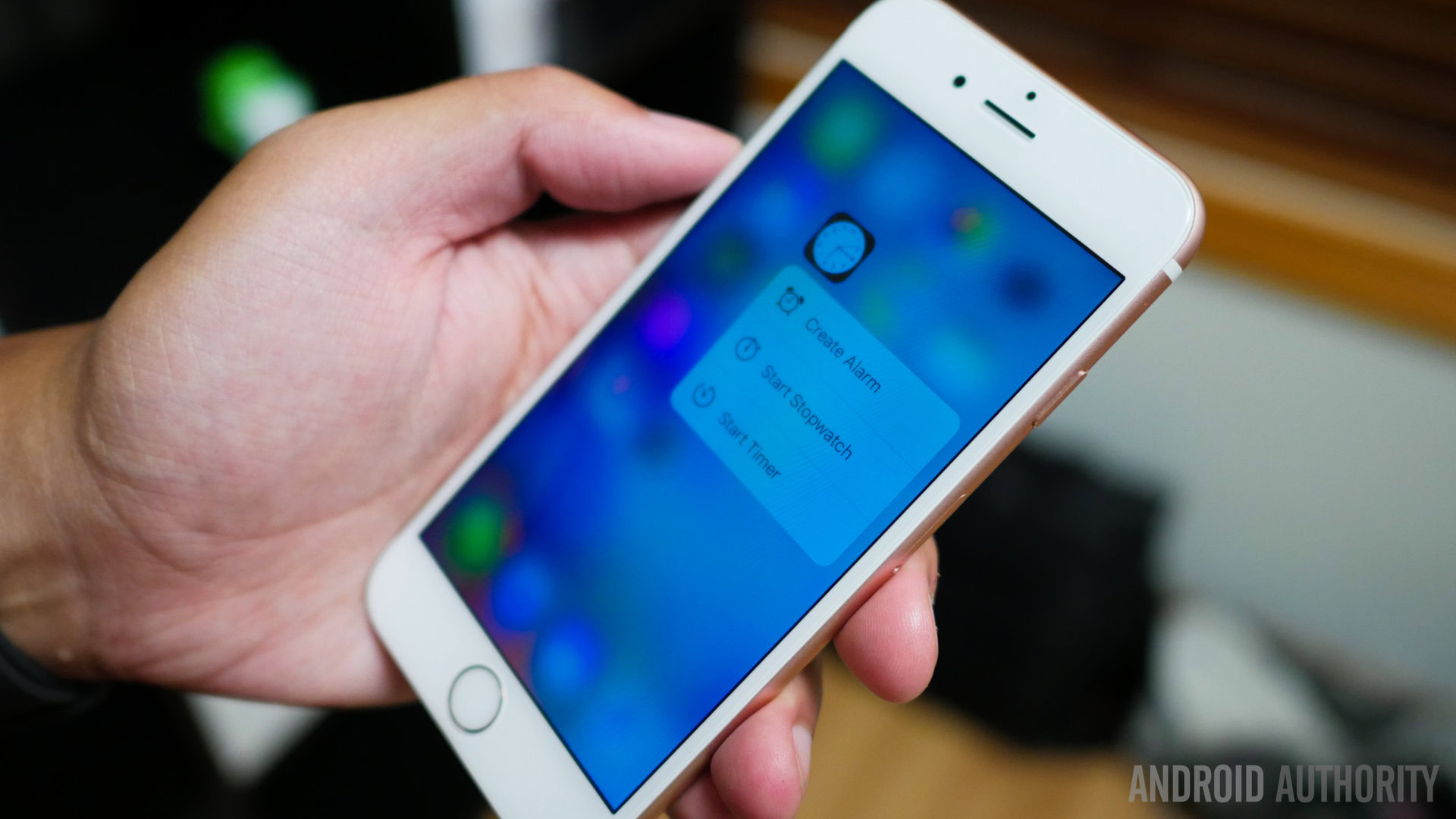
Yet, for all the additions that iOS 9 have given the iPhone experience, Apple’s operating system has one main thing going for it, and that is the fact that what you see is what you get. Without the full freedom to cater the experience to what they want, users can pick up an iPhone and basically get going, for both work and play, without a steep learning curve. While you do get the most out of Android, users might have to learn tips and tricks, and perform a number of changes in order to make them happen. While that is exactly why Google has a lot of fans for their huge Android ecosystem, Apple retains an extremely loyal fan base for the opposite reason.
Thankfully, there isn’t a lot of issues with moving between the two. Google applications are also available in the Apple App Store, so performing all of the same tasks can be done, no matter which of these phones you pick. It all comes down to extras, and in the case of multi-tasking, Samsung gets a boost over the iPhone 6s, with widgets and homescreen shortcuts also giving Samsung the edge. If 3D Touch continues to grow however, it could definitely help Apple’s case. Much of what iOS has brought in recent years has, arguably, started in Android, like the notification dropdown, but there are few reasons now to believe that either of these software packages are much better than the other, unless you truly prefer the look and feel of one over the other or absolutely want and need the extra freedom and customization that comes with Android.
Specs comparison
| iPhone 6s | Samsung Galaxy S6 | |
|---|---|---|
Display | iPhone 6s 4.7-inch IPS LCD 1334 x 750 resolution, 326 ppi | Samsung Galaxy S6 5.1-inch Super AMOLED 2560 x 1440 resolution, 577 ppi |
Processor | iPhone 6s 1.84 GHz dual-core Apple A9 | Samsung Galaxy S6 Exynos 7420 |
RAM | iPhone 6s 2 GB | Samsung Galaxy S6 3 GB |
Storage | iPhone 6s 32/64/128 GB | Samsung Galaxy S6 32/64/128 GB |
Camera | iPhone 6s 12 MP rear camera 5 MP front-facing camera | Samsung Galaxy S6 16 MP rear camera with OIS 5 MP front-facing camera with 90 degree wide angle lens |
Connectivity | iPhone 6s WiFi a/b/g/n/ac Bluetooth 4.0, NFC (Apple Pay only), GPS+GLONASS | Samsung Galaxy S6 WiFi a/b/g/n/ac Bluetooth 4.1, NFC, GPS+GLONASS |
Networks | iPhone 6s 3G/4G LTE | Samsung Galaxy S6 LTE cat 6 300/50 |
Battery | iPhone 6s 1,715 mAh | Samsung Galaxy S6 2,550 mAh Fast charging WPC and PMA-compatible wireless charging |
Software | iPhone 6s iOS 9 | Samsung Galaxy S6 Android 5.0 Lollipop |
Dimensions | iPhone 6s 138.3 x 67.1 x 7.1 mm 143 grams | Samsung Galaxy S6 143.4 x 70.5 x 6.8 mm 138 grams |
Colors | iPhone 6s Space gray, silver, gold, rose gold | Samsung Galaxy S6 Black, white, gold, blue |
Gallery
Pricing and final thoughts
In price, the gap between the Samsung Galaxy S6 and the iPhone 6s is actually quite small. On T-Mobile, for example, $27.50 a month over 2 years is needed for the Galaxy S6, while the iPhone 6s requires $27.09 for the same plan. Both phones will set you back around $650 or more at the full unlocked price, with the higher storage options also requiring quite the premium.
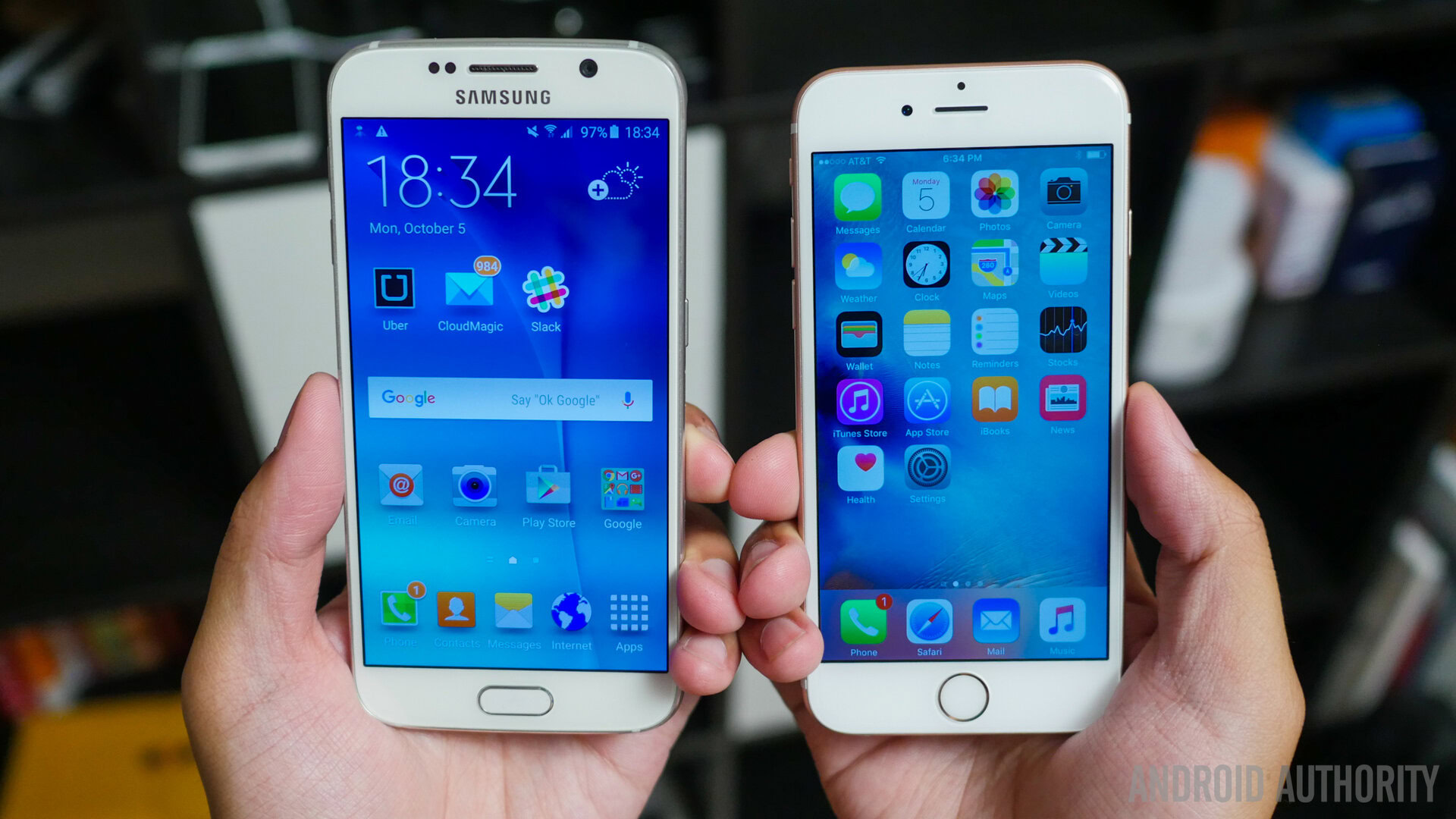
So, there you have it for this in-depth look at the Samsung Galaxy S6 vs iPhone 6s! These two devices are the best of their respective ecosystems, and this time around, may also feel on more even ground than ever before. Samsung used to be able to boast about removable batteries and expandable storage, but without these features, it actually feels like an equal to Apple’s newest smartphone. Even if the iPhone 6s might be an incremental update, it brings enough to the table to close a few key gaps, in the camera, and input methods, with 3D Touch.
The choice here is simple. Do you prefer the customization of Android over the simplicity of iOS? Do you prefer the third party accessory support the iPhone gets over the fragmented Android device market? Do you prefer to be on the cutting edge of specifications at all times? Being in touch with what you truly like as a user will help you make this decision, and even if you jump from one ship to the other, the overall ability to get things done is about the same.